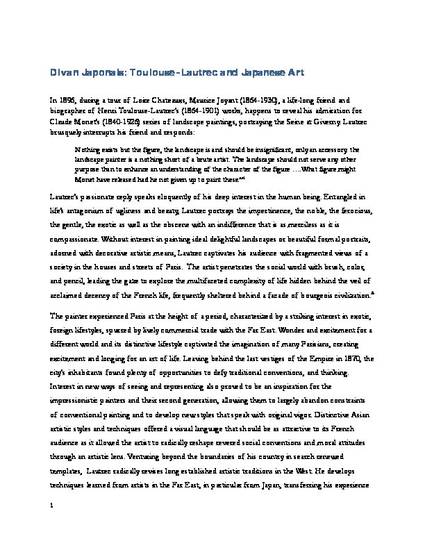
The French nineteenth century artists Henry Toulouse-Lautrec (1864-1901) is known for his distinctive style and bold character portraits of the theatrical scene of the gaslight era in Paris. The paper examines some of the formative influences of eighteenth century Japanese art on the development of visual characters, with specific focus on a lithograph entitled Divan Japonais. Alluding to the refined representation of Japanese courtesans, subtle nuanced reminiscences to an ideal of elegance create an allusion to highly respected courtesans in the Japanese ‘Green Houses’ of the Asian Yoshiwara the famous “Good Luck Meadow” in Edo, present day Tokyo. I argue that Lautrec draws on techniques in Asian art, effectively creating a visual language that suggests a carefully crafted reevaluation of values. Lautrec’s visual language promotes sensibilities characteristic for a Japanese aesthetic and lifestyle that are also intrinsic to a traditional cultivation of moral virtues in Asia. The argument will be developed in conjunction with an analysis of diverse forms of visual language apparent in two works of Lautrec, a print by the Japanese artist Kitagawa Utamoro (1753-1806), and a photo of the dancer Jane Avril (1868—1943).
Available at: http://works.bepress.com/evamaria-raepple/3/
